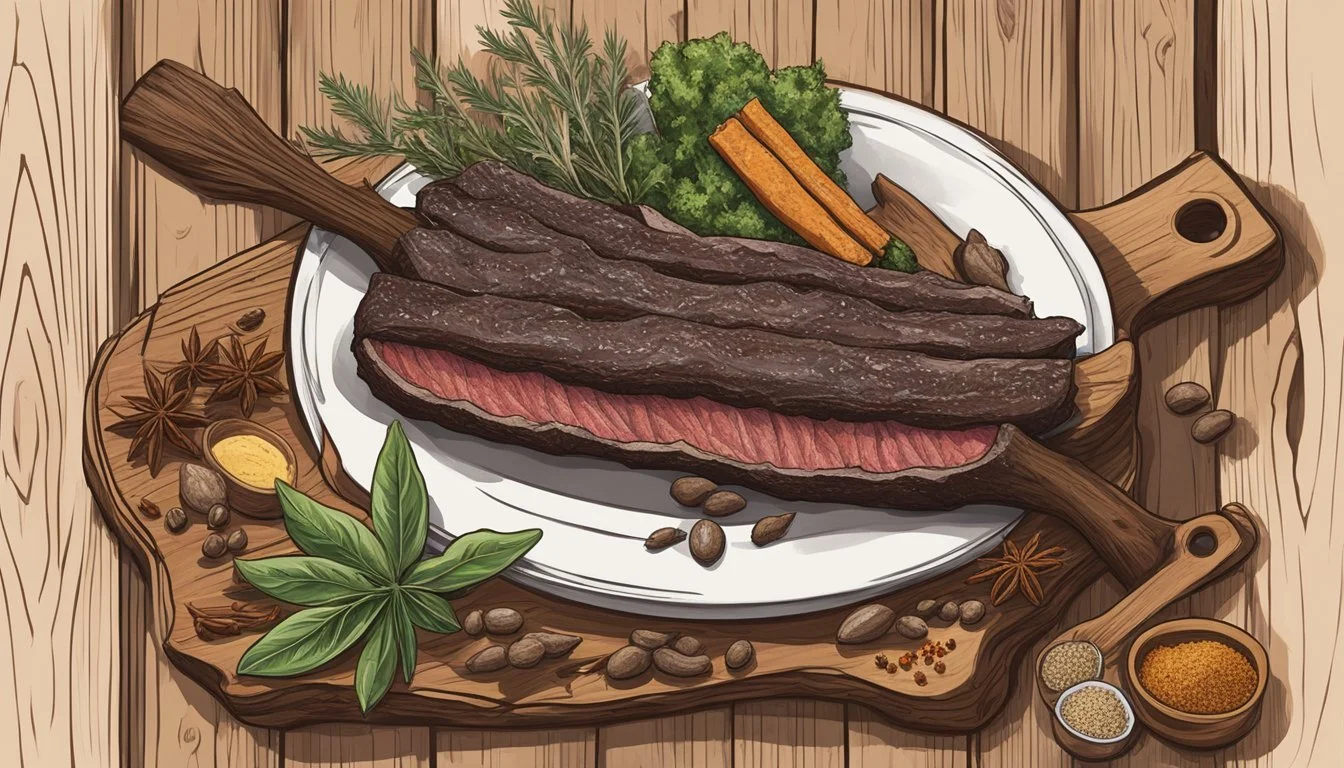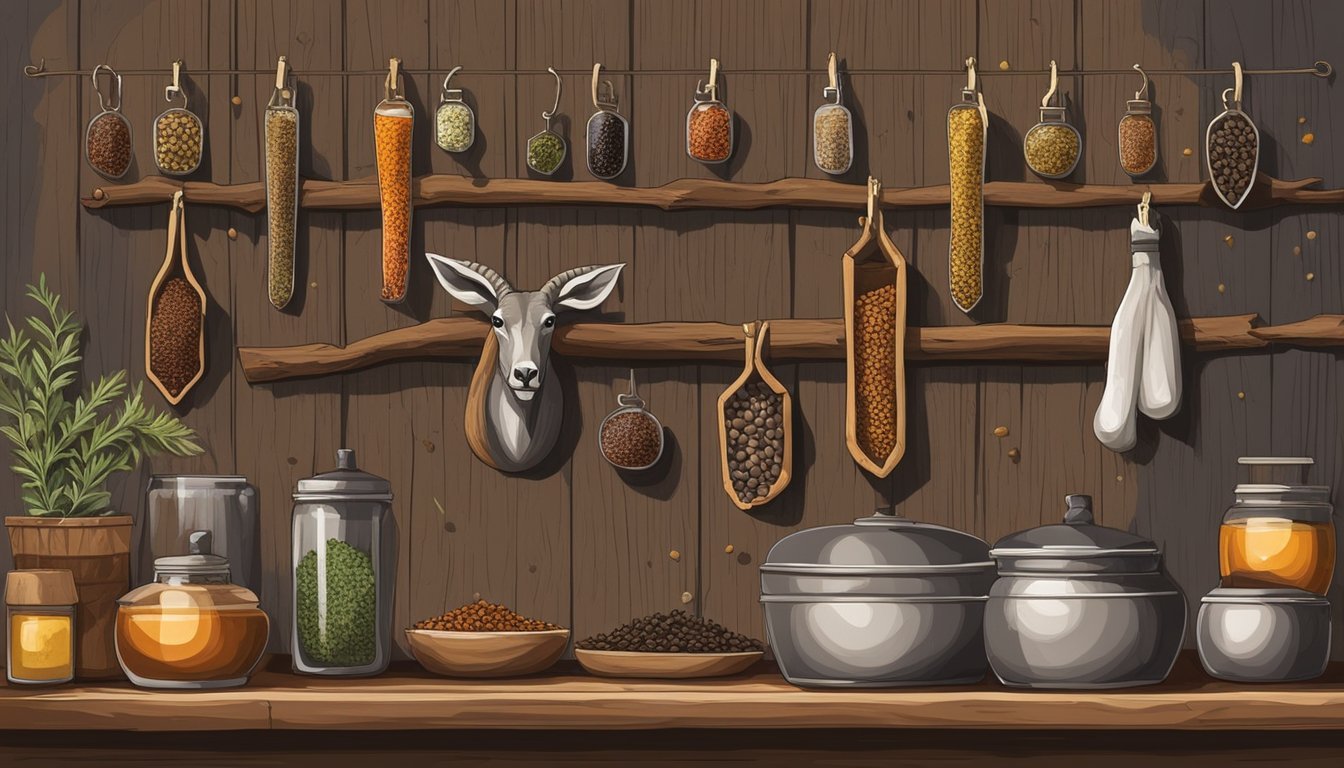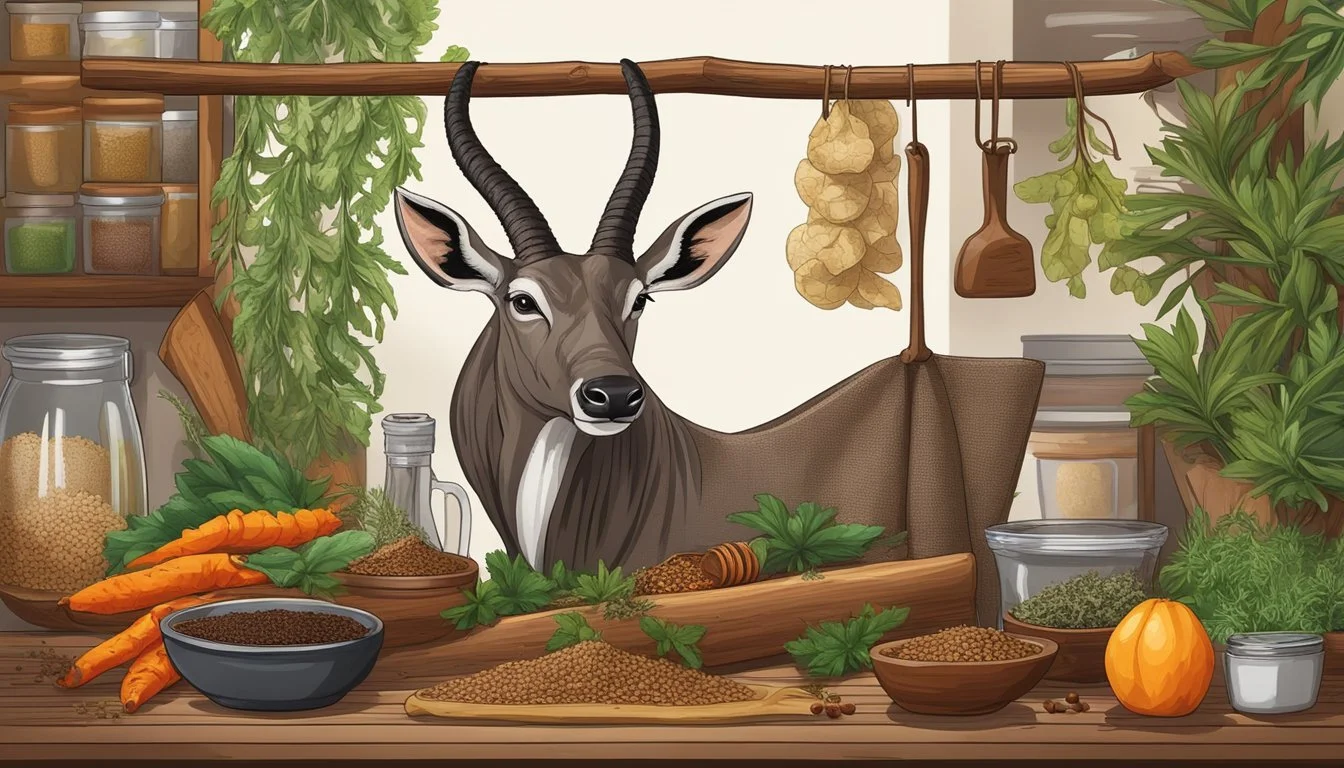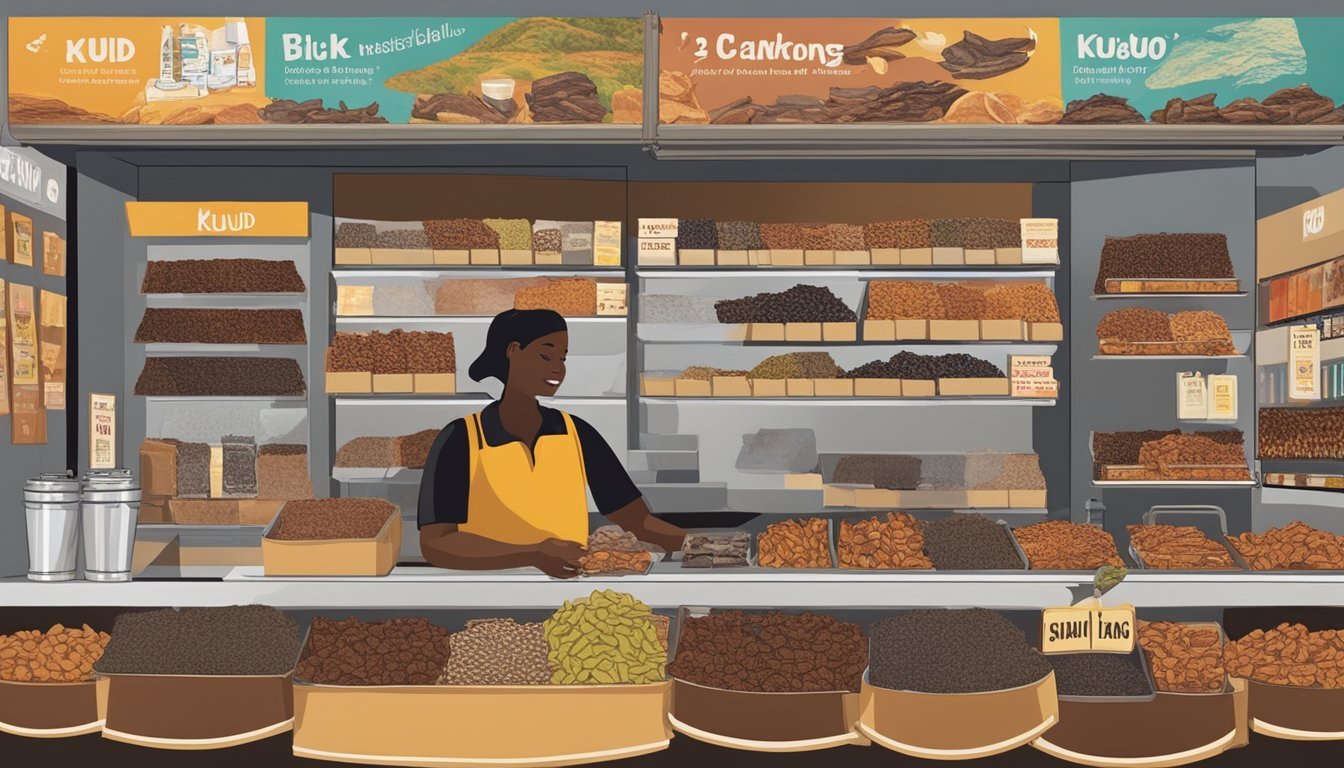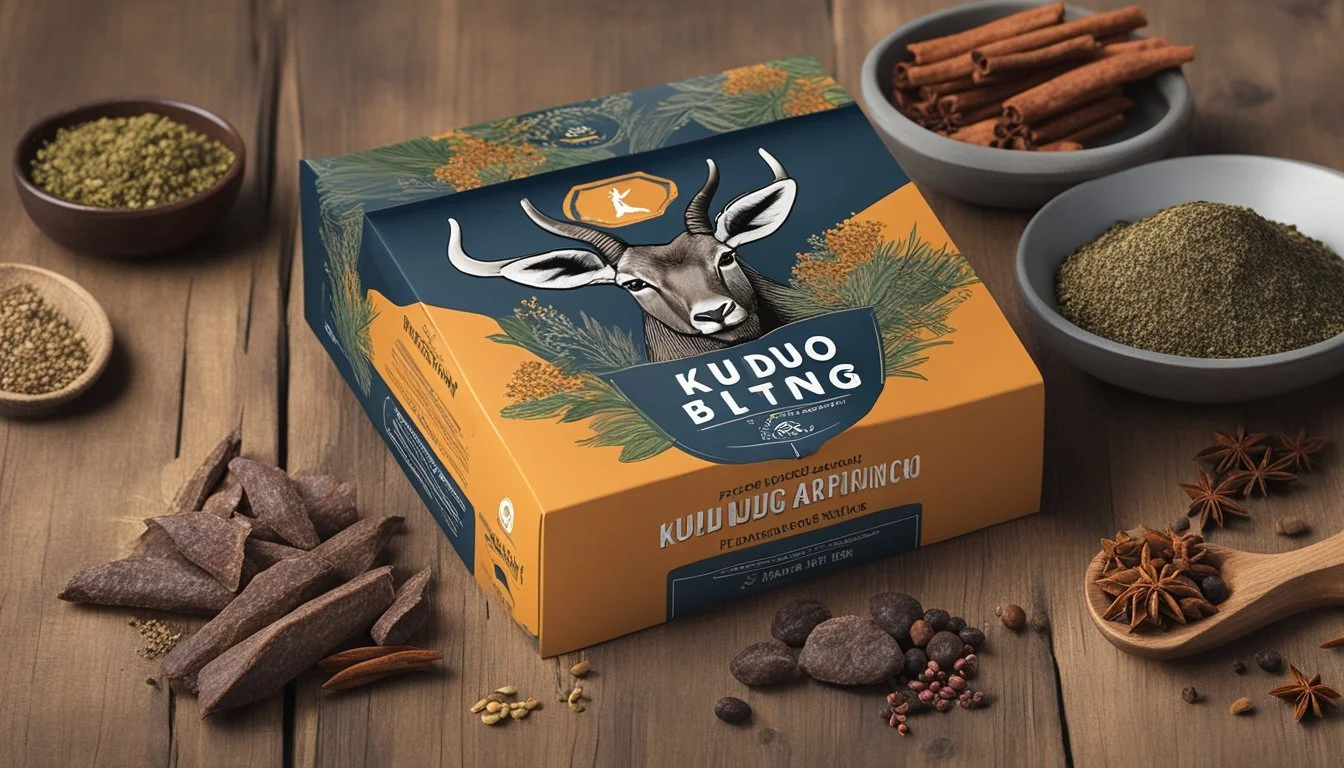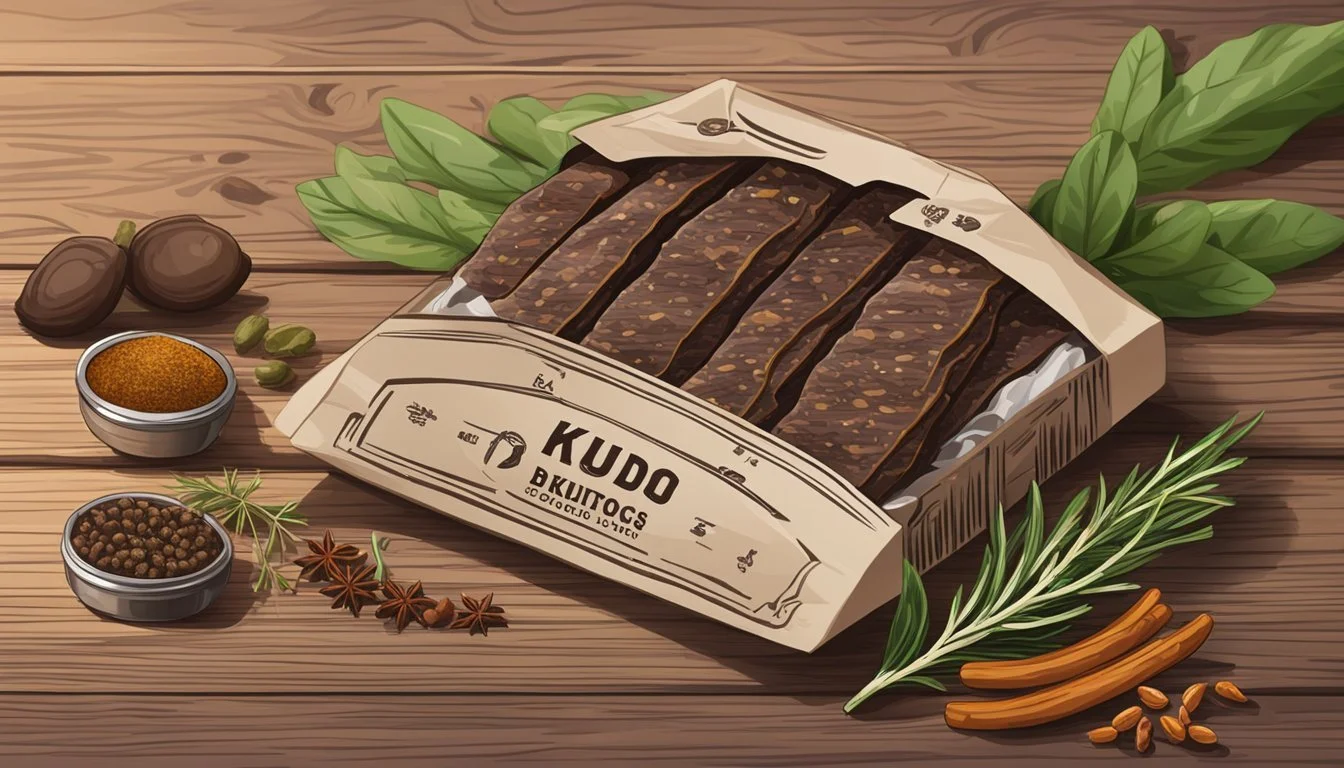Kudu Biltong
Unveiling the Savory Taste of South Africa's Treasured Treat
Biltong, a quintessential South African delicacy, is a flavorful and high-protein meat snack revered by many for its rich taste and chewy texture. Traditionally made from beef, biltong is also crafted with various game meats, and among these, kudu stands out as a popular choice. Kudu, a type of antelope renowned for its lean and tender meat, lends itself perfectly to the biltong-making process, creating a chewy delight that is savored by locals and international gourmands alike.
The preparation of biltong involves curing the meat with a blend of spices, such as coriander, black pepper, and salt, before it is air-dried to perfection. Unlike other meat snacks (What wine goes well with snacks?) that are cooked or smoked, biltong retains its nutritional value through its unique drying process. This method not only preserves the meat but also intensifies its flavor, making kudu biltong a satisfying and healthy snack option.
South Africa's tradition of biltong-making is deeply interconnected with its cultural heritage, with recipes and methods passed down through generations. As a result, kudu biltong is more than just a meat snack; it is a culinary expression of South African gastronomy, embodying both the country's history and its rich biodiversity. Whether enjoyed as an on-the-go snack or savored as part of a leisurely meal, kudu biltong remains an iconic example of South Africa's unique and beloved game meat offerings.
Historical Background
Biltong, with its savory flavor and chewy texture, stands as a testament to traditional preservation methods from Southern Africa. The historical tapestry of this snack intertwines indigenous techniques with European influences, particularly from the Dutch settlers, resulting in a distinctive culinary artifact.
Origination of Biltong
Biltong’s roots can be traced to the indigenous peoples of Southern Africa, where the need to preserve meat in a harsh climate gave birth to this method. They used various game meats, with kudu being a preferred choice due to its abundance and lean meat. Drying meat, often seasoned with simple ingredients, was essential for survival, extending the shelf life of the valuable protein source.
Dutch Settlers and Their Influence
The arrival of Dutch settlers in the 17th century introduced new flavors and preservation techniques to biltong. They brought with them spices like coriander, black pepper, and cloves. The Dutch term “bil,” meaning rump, and “tong,” meaning strip or tongue, may also have influenced the naming of this snack. The settlers’ practices evolved the simple dried meat tradition into the biltong varieties enjoyed today in South Africa and beyond.
Biltong Versus Beef Jerky
While biltong and beef jerky may seem similar, they have distinct differences, with biltong being a part of the cultural and culinary identity of South Africa. Unlike jerky, which is typically smoked and has a drier texture, biltong is cured with vinegar and spices and air-dried, usually in a biltong box. This process results in a moister, more tender meat with a unique flavor profile. Biltong’s European settler influence sets it apart from the purely American tradition of beef jerky.
Kudu Biltong Basics
This section delves into the origins and qualities of kudu biltong, from its traditional preparation to its nutritional benefits, catering to enthusiasts of this distinctive South African snack.
Defining Biltong
Biltong is a traditional South African snack, a variant of dried, cured meat originating from various Southern African countries. Unlike jerky, which is typically dehydrated at high temperatures, biltong is air-dried at ambient temperatures. This process is often accentuated with the use of spices like coriander seeds and vinegar to enhance flavor and preservation.
Kudu as a Choice of Meat
Kudu, a type of game meat, is renowned for its lean and flavorful characteristics, making it an excellent candidate for biltong. Its tender texture and the unique taste profile stand out among other meats. Biltong fans appreciate kudu’s subtle gamey flavor, which provides a distinctive alternative to the more commonly used beef.
Nutritional Profile of Kudu Biltong
Kudu biltong is not only delicious but also packs a high-protein punch, which is essential for muscle repair and building. It is rich in iron, zinc, and vitamin B12, underpinning its reputation as a healthy snack option. Below is a brief nutritional outline:
Protein: A primary source for muscle health and repair
Iron: Vital for oxygen transport and energy release
Vitamin B12: Important for nerve health and the production of red blood cells
Zinc: Necessary for immune function and wound healing
Consumers appreciate this snack for its healthy properties, making it a favorable choice for those seeking a nutritious, high-protein, and low-fat option.
Preparation and Preservation
The preparation and preservation of Kudu biltong turns this game meat into a durable and flavorful snack. The process involves a careful balance of curing, drying, and seasoning, promoting both the development of its unique taste and prolonging its shelf life.
Curing Process
Curing is essential for both flavoring the Kudu meat and inhibiting bacterial growth. The process begins with cutting the meat into consistent strips that are about 1 inch thick. These meat strips are then soaked in a mixture of vinegar and salt, sometimes with the addition of sugar and spices, which draws out moisture and initiates the curing of the meat. The use of vinegar, particularly red wine vinegar, helps to tenderize the meat and supplement the flavor profile.
Drying Techniques
After curing, the Kudu meat must be thoroughly dried. The drying process is traditionally done in a biltong box where air circulation is controlled to gradually remove moisture. Temperature and humidity are kept at optimal levels to avoid spoilage. In some regions, biltong is also air-dried under certain environmental conditions, with the drying period varying depending on thickness and desired dryness.
Seasoning Mix and Marinades
A distinct blend of spices is used to marinate the meat, typically involving coarse salt, cracked black pepper, crushed coriander seeds, bicarbonate of soda to aid in the drying process, and sometimes paprika or chilli flakes to tailor the heat level. The meat is coated with the seasoning mix to ensure that each strip is uniformly flavored. The marinades infuse the meat with a complex character that defines Kudu biltong's savory taste.
Biltong's Shelf Life and Storage
Properly prepared biltong can be stored for long periods due to its reduced moisture content and the preservative effects of the vinegar and spices. To maintain its quality, biltong should be kept in cool, dry conditions, preferably in an airtight container. These storage methods ensure that biltong remains a reliable and enjoyable snack for months at a time.
Culinary Characteristics
Kudu biltong stands out for its distinctive chewy texture and rich flavor profile, providing a unique snacking experience. It is crafted through a precise drying process which concentrates the meat's natural flavors.
Texture and Flavor Profile
Kudu biltong offers a chewy and satisfying texture that is less tough than other dried meats. The flavor profile is complex and can be attributed to the marination in vinegar, spices like crushed coriander seeds and black pepper, as well as a hint of brown sugar. The presence of fat strips within the meat contributes to a tender chew and depth of flavor. Unlike its counterpart, jerky, which is often smoked, biltong typically lacks smokiness, resulting in a more natural meat flavor.
Common Variations
Beef: The most common meat for biltong, known for its robust flavor.
Game meats: Such as ostrich (What wine goes well with ostrich?) and venison (What wine goes well with venison?), each adding a unique taste to the biltong.
Flavors: While traditional biltong sticks to simpler seasonings, variations might include more exotic spices for different palates.
Marinades: The type and concentration of vinegar used can vary, as can the specific combination of spices employed, altering the final taste and texture.
The craftsmanship in preparing kudu biltong lies in balancing these elements to create a snack that is rich in flavor and distinctly South African.
Cultural Significance
Biltong is not merely a snack; it signifies a deep-rooted tradition within South African culture with a history that tastefully merges the past with the present.
Biltong in South African Society
Biltong, as a cherished snack, stands at the heart of South African society. It transcends being just another item of food; it embodies a tradition that is thoroughly imbued in the everyday lives of its people from Cape Town to the outskirts of the Karoo. In South Africa, biltong’s popularity isn't confined to local markets or groceries; it is a snack deeply integrated into social rituals, family gatherings, and national sporting events, serving as a symbol of unity and pride.
Role in Social Gatherings: Biltong frequently features in celebrations and is a common sight during special occasions and gatherings. Its presence evokes a sense of communal sharing and camaraderie, harking back to the early days of Southern African inhabitants who relied on dried meats during their travels.
Biltong and National Identity: Over time, biltong has grown to be more than a savory treat; it has become an emblem of South African identity. The chewy delight is internationally recognized as a distinctive product of the country, akin to how one might regard sushi to Japan or pizza to Italy. Within the diverse culinary landscape of South Africa, biltong stands out as a significant part of the nation's cultural fabric.
In a contemporary context, the enduring appeal of biltong is reflected in its substantial impact on the South African economy, with a booming industry that is indicative of its unwavering demand. This widespread popularity underscored by its economic impact, not only highlights biltong’s position in South Africa’s society but also showcases the snack's influence on the sense of tradition and cultural identity among its people.
Biltong in the Global Market
Biltong, the South African dried meat snack, has transcended its local origins to gain a foothold in the global market. This section explores how biltong has become available beyond Africa and how it compares to other international meat snacks.
Availability Beyond Africa
Biltong has made its way into supermarkets and specialty stores across Europe and North America, catering to an expanding base of biltong fans outside its homeland. In Europe, it can frequently be found in the snack aisles, with an array of flavors tailored to local tastes. Across North America, biltong is steadily carving out a niche alongside traditional snacks, owing much of its growth to increased consumer interest in protein-rich and minimally processed foods.
Distribution Channels:
Specialty food stores
Online platforms
Health food sections in supermarkets
Comparisons to Other Meat Snacks
While biltong is often compared to other meat snacks, it stands apart due to its unique preparation and flavor profile. Unlike the popular American beef jerky, biltong is air-dried at ambient temperatures and incorporates a distinctive blend of spices, such as coriander and black pepper. This curing process results in biltong's chewier texture and richer flavor, distinguishing it in the global marketplace where consumers seek diverse and authentic taste experiences.
Comparison Table:
Biltong: Origin - South Africa, Texture - Chewy, Flavor Profile - Spiced, Rich
Beef Jerky: Origin - North America, Texture - Firm, Flavor Profile - Smoky, Sweet, Salty
Biltong's increasing presence in supermarkets and amongst diverse meat snacks highlights its successful transition from a local South African product to a global culinary delight.
Consumer Considerations
When purchasing kudu biltong, consumers should weigh the health benefits and make informed choices based on the quality and characteristics of the biltong available.
Health Benefits of Biltong
Kudu biltong is not only a satisfying snack but also a source of nutritional value. High in protein and low in fat, this meat snack aids in muscle building and repair. Each serving is power-packed with essential amino acids and is low in carbohydrates, making it an attractive choice for those following a low-carb diet. It's important to note that biltong can be high in sodium, which enhances its taste and preserves the meat but may not be suitable for individuals with certain dietary restrictions.
Key Nutritional Elements of Kudu Biltong:
Protein content: Maintains muscle health
Fat content: Generally lower than other snacks
Carbohydrates: Minimal, making it keto-friendly
Choosing the Right Biltong
Consumers face a variety of choices when selecting kudu biltong. Factors to consider include the cut of meat, the spices used, and the method of curing and drying.
Selection Criteria:
Meat Quality: Preference for grass-fed, sustainably sourced meat
Curing Method: Traditional techniques without artificial additives
Flavor Profile: Choice of spices and level of spiciness
A discerning buyer will seek biltong that is consistently thin and evenly dried, without overly tough or chewy sections. Consumers should look for producers who prioritize craft and quality, ensuring the snack is both wholesome and flavorful.
Home Preparation of Biltong
Creating biltong at home involves thorough preparation, appropriate seasoning, and effective drying, ensuring a flavorsome result reminiscent of South African tradition.
DIY Biltong Making
The process starts with selecting high-quality cuts of meat, such as beef, which is then cut into strips ensuring they remain tender. Traditionally, these strips are marinated in a blend of spices and vinegar to infuse the meat with a distinctive flavor before the drying stage begins.
Equipment and Ingredients Needed
To make biltong, one will need the following:
Meat: High-quality beef or game meat
Marinade: A mixture of vinegar and Worcestershire sauce
Spices: Sea salt, crushed coriander seeds, black pepper, paprika, and optional additions such as garlic or cloves for extra flavour
Equipment: A biltong box or dehydrator, alternatively a clean area with biltong fans for air circulation
Tips for Successful Biltong at Home
Successful preparation hinges on a few key tips:
Seasoning: Apply a generous amount of the spice mixture and ensure meat strips are well-coated.
Marinating: Allow the meat to marinate in the refrigerator for 24 to 36 hours for the flavors to penetrate effectively.
Drying: Hang biltong in a dry, well-ventilated space, using a biltong box or dehydrator, and allow to dry for several days until the desired level of dryness is achieved.
Conclusion
Kudu biltong represents a cherished snack among South Africans and enthusiasts of game meat. Its preparation, involving air-drying seasoned strips of kudu meat, preserves the distinct flavor and tenderness that biltong fans appreciate.
Distinct Features:
Air-Drying: Unlike other meat snacks that are cooked, kudu biltong is air-dried, resulting in a unique texture.
Flavor Profile: The gamey taste of kudu meat, combined with traditional spices, delivers a complex flavor experience.
The process of making biltong respects the meat's inherent qualities, allowing it to mature and intensify in taste. Moreover, the utilization of kudu, a type of antelope common in South Africa, provides a sustainable source of protein, tapping into the region's rich wildlife resources.
List of Biltong Benefits for Enthusiasts:
High protein content
Low-fat snack option (given that kudu meat is lean)
Absence of artificial preservatives due to the natural curing process
Kudu biltong, therefore, not only fulfills the role of a convenient and nutritious snack but also carries cultural significance. Its production and consumption maintain a connection to South African traditions, offering a piece of heritage to both locals and global biltong fans alike. The appreciation for biltong highlights not just culinary preferences but also a celebration of cultural identity.
References
"Biltong: A Guide to South Africa's Iconic Dried Meat" This source provides an overview of biltong preparation methods, detailing the types of meat used and the traditional seasoning mixture.
Wikipedia Entry: "Biltong" The Wikipedia page gives a historical background of biltong, its origin in Southern African countries, and mentions the variety of meats, including game meats like kudu, that can be used to make biltong.
"The Biltong Breakdown: Understanding South African Cured Meat" This article discusses different meats used for biltong and the marinating process typical for South African biltong, providing insight into the texture and processing techniques.
"What Is Biltong? The Meat Snack Differs From Jerky — Eat This Not That" The differences between biltong and jerky are highlighted in this source, with special attention to the air-drying and flavoring process of biltong, offering a comparative perspective.
"The Hirshon Ultimate South African Beef Biltong - The Food Dictator" It emphasizes the unique characteristics of South African biltong, including the non-smoked drying process, and its cultural significance, which can be applied when discussing kudu biltong.
Organizations and Websites:
South African Biltong Makers Association They offer resources on biltong standards and practices, and can be referenced for technical definitions and preparation techniques specific to kudu biltong.
Eat This Not That A culinary website which explores different foods and recipes, with useful comparisons to understand biltong in the context of other dried meats.
The information has been compiled from reliable sources to ensure an accurate representation of kudu biltong as a South African game meat snack.

